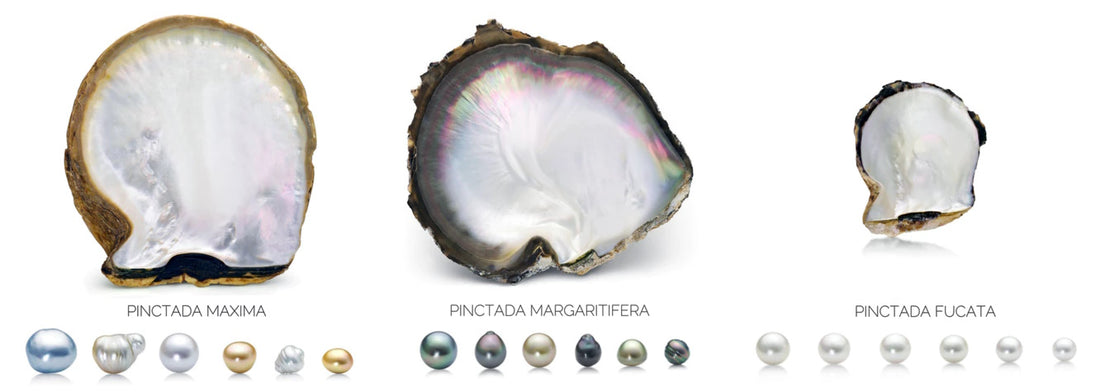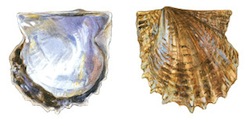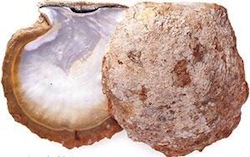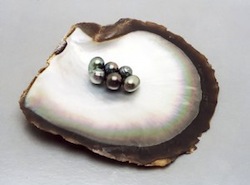
THE VARIOUS PEARL OYSTERS AND THEIR HISTORY
Pinctada radiata

Pearl culture focuses mainly on three species of oysters. Historically, it is the Pinctada radiata , also known as Pinctada fucata martensii , which was selected in Japan for the cultivation of the famous Akoya pearls .
This oyster, of modest size, generally does not exceed 10 centimeters. In Japan, it is nicknamed Akoya , a name also used to designate the pearls it produces.
Akoya Pearl Cultivation Areas
Akoya oysters have been cultivated in other coastal regions such as Vietnam, China, particularly around the island of Hainan, and Thailand. In China, the cultivation of this species really took off in 1983 and, within a few years, production began to rival that of Japan.
Characteristics of Akoya pearls
Pearls from this species are typically 6 mm in diameter, with a maximum of 8 mm. The Japanese particularly appreciate pearls with a subtle pinkish tint, while Americans prefer white pearls. (see: Orient of pearls )
Pinctada maxima

The Pinctada maxima , nicknamed the queen of pearl oysters, is a remarkable species for its size and the beauty of its mother-of-pearl. Wild specimens can reach 40 centimeters, while cultivated oysters usually measure between 15 and 25 centimeters.
South Sea Pearls
These oysters produce the famous South Sea pearls , which are distinguished by their large size and exceptional luster. Their diameter can reach up to 20 mm, making them the largest cultured pearls in the world.
Different varieties of Pinctada maxima
- Pinctada maxima commune : Produces white pearls.
- Silver-Lipped Variety : Produces light gray pearls with metallic undertones.
- Golden-lipped variety : Produces pearls of an intense golden hue, which are highly prized. These pearls come mainly from the Philippines, Indonesia and Burma.
Growing regions
Pearl farms exploiting Pinctada maxima are mainly located in northern and western Australia, Indonesia, the Philippines and Burma.
Pinctada margaritifera

This species, known as the Polynesian oyster , is the source of the famous Tahitian black pearls . These pearls, previously rare in their natural environment, have gained popularity through pearl culture.
Characteristics of Tahitian pearls
The pearls produced by the Pinctada margaritifera are usually between 8 and 12 mm, but can reach up to 20 mm. Although they are called "black pearls", they often have green, blue, or eggplant reflections, and iridescent shades nicknamed "peacock".
Growing areas
These oysters grow in the lagoons of the Pacific atolls, particularly in the Tuamotu and Gambier archipelagos, as well as in the Cook Islands and Fiji.
Pteria sterna

This oyster, present in the Pacific, from Baja California to Peru, is an exception among pearl species because it is not part of the genus Pinctada .
Pteria sterna pearls
- Size: Pearls measure between 10 and 15 mm.
- Colors: They are distinguished by vibrant hues ranging from red to eggplant and metallic green.
The cultivation of this species is still little developed, although a company in Baja California, Perlas del Mar de Cortez , is exploring its potential.
Abalone (Haliotis)
Finally, abalone is the only gastropod used for pearl farming. Farms in New Zealand mainly produce half pearls sought after for their vibrant colours ranging from green to blue.
